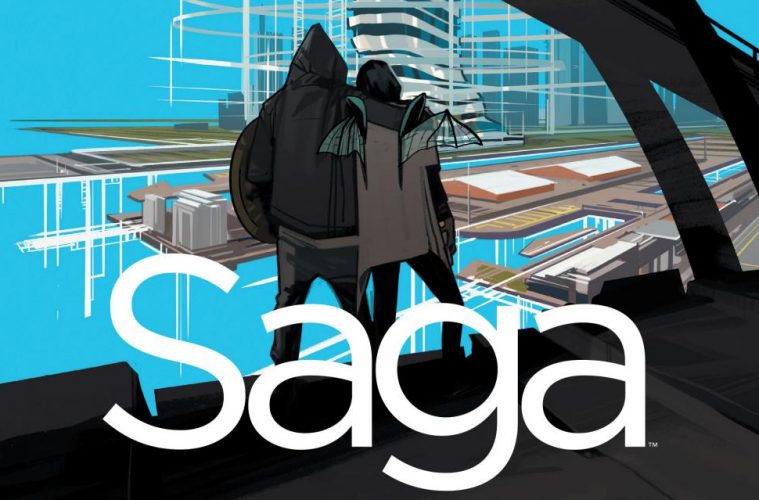Usually, when people think comics, they think people with superpowers saving the world. But superhero comics aren’t for everyone. The timelines and amount of backstory can be daunting and unwieldy, as can the constant shakeups in writing teams and art styles. Fortunately, in the past few years, there’s been an explosion of alternatives for people who want to read comics but don’t necessarily want to wade into the complicated worlds of DC and Marvel.
That was how I discovered Saga. It was at the top of list after list of comics to read if you were new to the genre. And for good reason, it turned out. The series, written by Brian K. Vaughan and illustrated by Fiona Staples, is often hailed as Star Wars meets Romeo & Juliet. It’s a space opera with a romantic twist. An adventure story with love at it’s core.
Saga follows Alana and Marko, former soldiers from opposite sides of a galaxy-consuming war, as they run from planet to planet, trying to keep themselves and their infant daughter, Hazel, safe from pursuers from both sides of the fight. Their romance, born in a jail where Marko was a prisoner and Alana was a guard, represents a threat to anyone invested in keeping tensions in the galaxy high. They’re forced to fend off bounty hunters, royalty, and several other unsavory characters.
There’s so many reasons why I consistently encourage people to pick up Volume 1, but here are the main ones:
- Colorful cast. One of Saga’s biggest strengths is its characters. Alana and Marko are flawed and realistic heroes, as well as a flawed and realistic couple. They fight, they make mistakes, and sometimes they have different priorities. And, thanks to their very different cultural backgrounds, sometimes they disagree on the best way to raise their child. The supporting cast is equally well-rendered and complex. Plus, Vaughan and Staples take advantage of the fact that, with science fiction, characters can look like anything. Horns, wings, varied skin tones, TVs for heads—Saga has it all.
- Taking on big ideas. The other main thing that Saga does phenomenally is handle big themes. The war at the center of the story is between the planet Landfall and its moon, Wreath, and through that conflict, Vaughan and Staples are able to comment on colonialism, the class system, and the price of revolution. Other plot lines deal with addiction, parenting, and whether we can truly learn about the world through fiction (meta, I know).
- Pretty and smart. Comics are a team effort; both the art and the writing need to be great or the work as a whole falls flat. Fortunately, Saga has all its bases covered. The dialogue is snappy and solid—Vaughan does heart-wrenching and sassy with equal skill. And the art is just absolutely beautiful. With so many alien backdrops and characters, you would think some might begin to run together, but Staples keeps them all distinct. Honestly, some of the spreads are so pretty, I’d love to hang them on my walls.
- Nifty narration. Saga’s story could easily be told just from the present with no narration or commentary. But instead, the writers chose to use Hazel’s voice to guide us through the plot. From her place somewhere in adulthood, Hazel is able to look back and tell us the story of her parents. She is, in turns, loving, judgemental, and thankful when she speaks of them, and her voice makes the comic as much an origin story as it is a romance and adventure.
Volume 6 was just released on July 5th, so do yourself a favor and catch up on all of them. With all the interlacing storylines and the drama that accompanies Hazel’s early childhood, Saga is best consumed binge-style.
Featured image via Goodreads.


